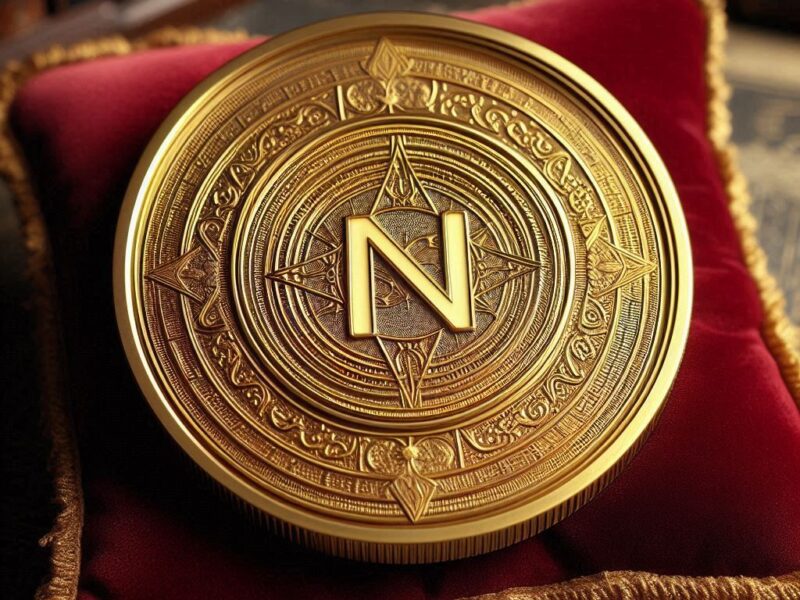Litecoin is often referred to as the silver to Bitcoin’s gold and has long been one of the most popular and profitable cryptocurrencies to mine. Litecoin mining is relatively accessible for beginners.
In this article, we have provided a comprehensive guide to walk you through everything you need to know to start mining Litecoin.
Understanding Litecoin Mining
Like Bitcoin, Litecoin uses a Proof-of-Work (PoW) consensus mechanism to secure the network and add new blocks to the blockchain.
In Litecoin’s PoW system, miners compete to solve complex mathematical puzzles using specialized computer hardware. The first miner to find a solution, known as a hash, that meets the current difficulty target gets to add the next block to the chain and receive the block reward, currently 12.5 LTC.
However, there are some key differences between Litecoin and Bitcoin mining:
- Hashing Algorithm: Litecoin uses the Scrypt hashing algorithm, as opposed to Bitcoin’s SHA-256. Scrypt is designed to be more memory-intensive, which makes it more resistant to the development of specialized ASIC mining hardware. This helps keep Litecoin mining more decentralized and accessible to individuals.
- Block Time: Litecoin has a block time of 2.5 minutes, compared to Bitcoin’s 10 minutes. This means that transactions are confirmed faster and miners can earn rewards more frequently, but it also results in a higher overall network difficulty.
- Total Supply: Litecoin has a fixed total supply of 84 million coins, exactly four times that of Bitcoin. This affects the long-term economics and rewards of mining.
- Difficulty Adjustment: Litecoin’s mining difficulty adjusts every 2016 blocks, or roughly every 3.5 days, to maintain the 2.5-minute block time. This is more frequent than Bitcoin’s 2-week adjustment period.
Mining Hardware: Choosing Your Rig
The first step to mining Litecoin is assembling your mining hardware. While early miners could use standard CPUs or GPUs, the increasing difficulty of the Litecoin network now requires specialized ASIC (Application Specific Integrated Circuit) miners to be profitable.
Some popular ASIC miners for Litecoin include:
- Antminer L7: Bitmain’s newest Scrypt miner, delivering a hash rate of 9500 MH/s at 3425W power consumption.
- Goldshell LT6: Offers 3350 MH/s at 2000W.
- FutureBit Apollo LTC Pod: A smaller, lower-cost option providing 100 MH/s at 200W.
When choosing your hardware, consider factors like hash rate, power efficiency, price, and availability. Higher hash rates and lower power consumption will lead to greater profitability, but will also come at a higher upfront cost.
Read also: Why Is Crypto Crashing, and Will It Recover?
You will also need to consider the infrastructure and environment for running your miners, including power supply, cooling, and noise management. ASIC miners generate significant heat and noise, so a dedicated mining space with proper ventilation and sound insulation is recommended.
Mining Pools: Joining Forces
It is possible to mine Litecoin solo, but the high network difficulty means that individual miners may go long periods without finding a block and earning rewards. To provide a more stable and predictable income stream, most Litecoin miners choose to join a mining pool.
A mining pool is a group of miners who combine their computing power and split the rewards proportionally based on each miner’s contributed hash rate. By pooling resources, miners can earn smaller, more frequent payouts rather than hoping for a lucky solo block find.
Some popular Litecoin mining pools include:
- Litecoinpool.org: One of the oldest and most established LTC pools, with over 300,000 workers and a low 1% fee.
- ViaBTC: A large multi-coin pool with around 20% of the Litecoin hash rate. Fees are 2% for PPS and 4% for PPLNS.
- Poolin: Another multi-coin pool with a significant share of LTC hash rate. Fees range from 1.5% to 2.5% depending on payout scheme.
- F2Pool: A major Chinese pool that supports Litecoin with a 1.5% PPS fee.
Software Setup: Configuring Your Miners
Most ASIC miners come with their own proprietary software, but there are also some popular open-source options like CGMiner and BFGMiner.
The basic process for setting up your software involves:
1. Connecting your miner to your computer or network via Ethernet.
2. Downloading and installing the necessary drivers and firmware for your specific hardware.
3. Configuring your miner settings, including pool URL, worker name, and password.
4. Setting any additional options like clock speed, voltage, and fan control to optimize performance and efficiency.
5. Initiating the mining process and monitoring your miner’s hash rate, temperature, and shares submitted to the pool.
Optimizing Profitability
Mining profitability depends on a number of variables, including your hardware’s hash rate and power efficiency, electricity costs, pool fees, and the current price and difficulty of Litecoin. To estimate your potential earnings, you can use an online Litecoin mining calculator like CryptoCompare or WhatToMine.
Plug in your miner’s specs, electricity rate, and pool fees, and the calculator will estimate your daily, monthly, and yearly profits. Keep in mind that these are just estimates based on current conditions, and actual profitability can fluctuate significantly with changes in difficulty and LTC price.
To optimize your profitability, consider:
1. Overclocking your miner to increase its hash rate, while monitoring for stability and temperature issues.
2. Undervolting your miner to reduce power consumption and heat generation, which can lower electricity costs and extend hardware lifespan.
3. Sourcing cheaper electricity through industrial rates, renewable energy, or relocating to an area with lower energy costs.
4. Regularly cleaning and maintaining your miners to ensure optimal performance and efficiency.
5. Carefully managing your cash flow and reinvesting profits into newer, more efficient hardware over time.
Treat your mining operation like a business, with close attention to costs, revenue, and return on investment.
Securing Your Earnings
As you start earning LTC rewards from your mining efforts, then you need to have a secure wallet to store and manage your coins. There are several types of Litecoin wallets to choose from:
1. Hardware wallets like Ledger or Trezor offer the highest level of security by storing your private keys offline.
2. Desktop wallets like Litecoin Core or Exodus provide a balance of security and convenience for regular use.
3. Mobile wallets like LoafWallet or Trust Wallet allow you to manage your LTC on the go.
4. Web wallets like LiteVault or Liteaddress.org are accessible from any internet-connected device but may be more vulnerable to hacks.
When setting up your wallet, follow best practices like:
1. Enabling two-factor authentication for additional login security
2. Keeping your recovery seed phrase in a safe, offline location.
3. Never sharing your private keys or seed phrase with anyone.
4. Regularly updating your wallet software to patch any security vulnerabilities.
Key Takeaways
1. Litecoin mining is the process of using specialized computer hardware to solve complex mathematical puzzles and earn LTC rewards for securing the network. It can be a rewarding way to earn passive income and participate in the Litecoin ecosystem.
2. Litecoin uses the Scrypt hashing algorithm, which is more memory-intensive and ASIC-resistant compared to Bitcoin’s SHA-256. This helps keep Litecoin mining more decentralized and accessible to individual miners.
3. To start mining Litecoin, you’ll need to invest in ASIC mining hardware that offers a good balance of hash rate, power efficiency, and cost. Popular options include the Antminer L7, Goldshell LT6, and FutureBit Apollo LTC Pod.
4. Joining a Litecoin mining pool can provide a more stable and predictable income stream compared to solo mining. When choosing a pool, consider factors like fees, payout structure, geographic location, and reliability.
5. Configuring your mining software involves connecting your ASIC miner, installing necessary drivers and firmware, setting pool and worker details, and optimizing performance settings like clock speed and voltage.
6. Litecoin mining profitability depends on variables like hash rate, power consumption, electricity costs, pool fees, and LTC price. Use online profitability calculators and optimize your hardware and operating costs to maximize returns.
7. Securely store and manage your LTC earnings using hardware, desktop, mobile, or web wallets. Enable two-factor authentication, keep your recovery phrase safe, and follow best practices to protect against scams and hacks.
8. Stay informed on the latest developments in Litecoin and the broader crypto mining space, and be prepared to adapt your strategy as network difficulty, prices, and technology evolve over time.
Frequently Asked Questions
Is Litecoin mining still profitable?
The profitability of Litecoin mining depends on several factors, including your hardware efficiency, electricity costs, and the current price and difficulty of Litecoin. As of May 2023, Litecoin mining can still be profitable with efficient ASIC miners and low-cost electricity, but profitability can change quickly with market conditions. Use online profitability calculators and continuously monitor your costs and earnings to ensure your operation remains in the green.
Can I mine Litecoin with my computer or laptop?
While it was once possible to mine Litecoin with consumer-grade CPUs and GPUs, the current network difficulty makes it impossible to mine profitably without specialized ASIC hardware. Attempting to mine with a regular computer would result in negligible earnings and likely damage your hardware due to overheating and wear. Stick to purpose-built ASIC miners for the best results.
How much LTC can I expect to mine per day?
Your daily LTC earnings will depend on your mining hardware’s hash rate, the current network difficulty, and the payout structure of your mining pool. As an example, an Antminer L7 producing 9500 MH/s would currently earn around 0.08 LTC per day before accounting for electricity costs and pool fees. However, actual earnings can vary significantly based on luck and changes in difficulty.
What is the minimum amount of LTC I can withdraw from a mining pool?
Each Litecoin mining pool has its own minimum payout threshold, which can range from 0.001 LTC to 1 LTC or more. When your unpaid balance reaches this threshold, the pool will automatically transfer your earnings to your designated Litecoin wallet. Some pools also allow you to set a custom payout threshold higher than the minimum.
How often does the Litecoin difficulty change?
Litecoin’s mining difficulty adjusts every 2016 blocks, which takes around 3.5 days at the target block time of 2.5 minutes. The difficulty adjustment ensures that blocks are mined at a consistent rate even as the network’s total hash rate fluctuates with changes in the number and efficiency of miners. If the previous 2016 blocks took less than 3.5 days to mine, the difficulty will increase, and vice versa.
What is the current block reward for mining Litecoin?
As of May 2023, the block reward for mining Litecoin is 12.5 LTC per block. This reward halves every 840,000 blocks, or roughly every 4 years, similar to Bitcoin’s halving schedule. The next Litecoin halving is expected to occur in August 2023, reducing the block reward to 6.25 LTC. Over time, as the block reward decreases, transaction fees are expected to become a larger component of miner revenue.









